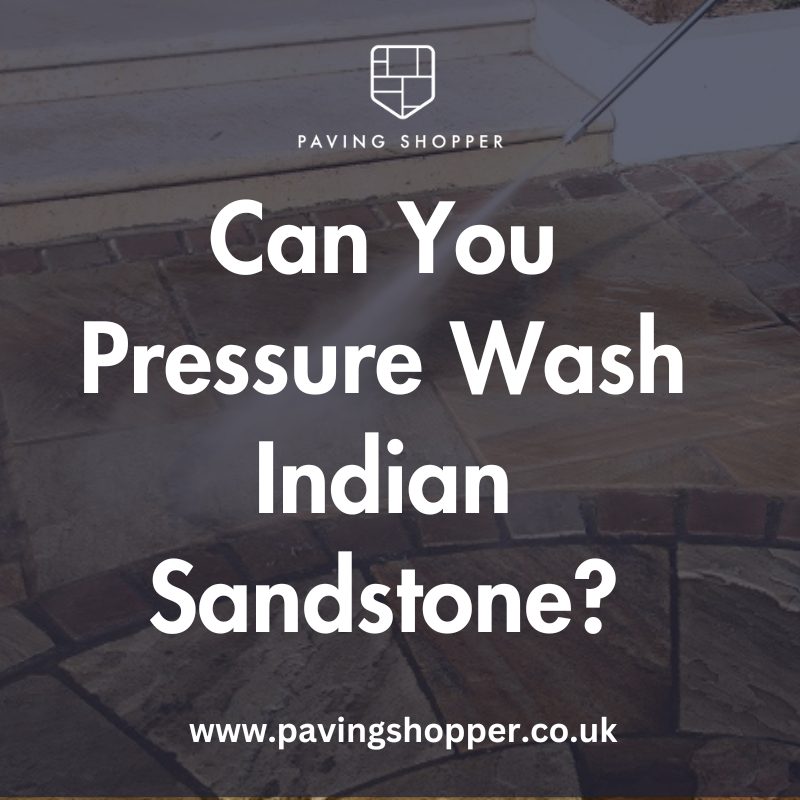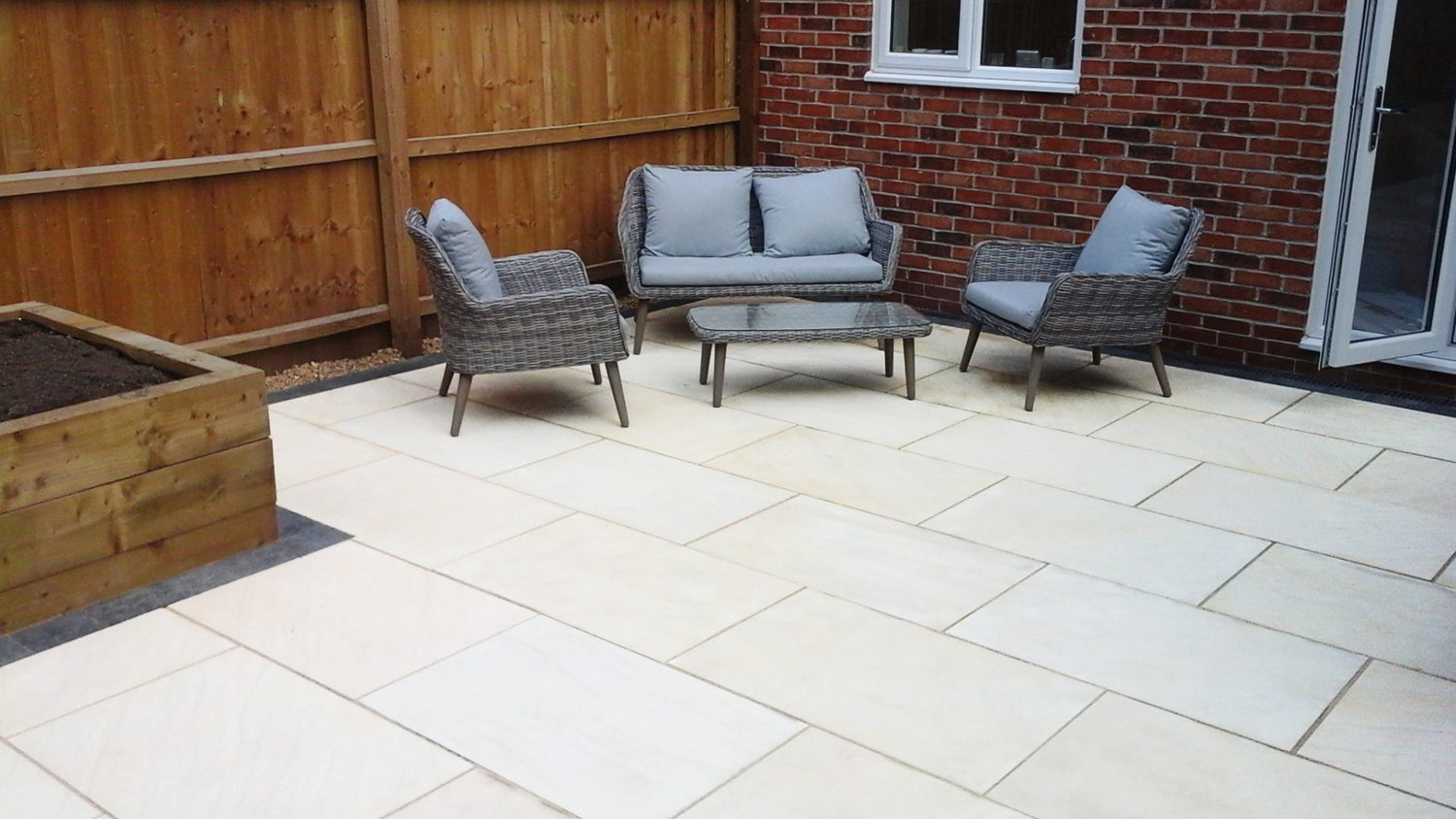
Can You Pressure Wash Indian Sandstone?
Share
Indian sandstone is a popular choice for outdoor paving due to its durability and attractive appearance. However, like any surface, it requires regular cleaning to maintain its beauty. One common question homeowners have is whether they can use a pressure washer to clean their Indian sandstone paving.
Indian sandstone can be pressure washed , but it is essential to take certain precautions to avoid damaging the surface. When pressure washing Indian sandstone, use a low-pressure setting and a wide spray nozzle to minimize the risk of etching or pitting the stone. It is also crucial to maintain a safe distance between the pressure washer nozzle and the sandstone surface.
How to Pressure Wash Indian Sandstone
- Begin by clearing the area of any furniture, potted plants, or other objects that may obstruct your cleaning process.
- Sweep the surface to remove loose debris, dirt, and leaves.
- Set your pressure washer to a low-pressure setting, ideally between 1200 to 1500 PSI, to prevent damage to the sandstone.
- Choose a wide spray nozzle, such as a 25-degree or 40-degree nozzle, to distribute the water pressure evenly across the surface.
- Maintain a distance of at least 12 inches between the pressure washer nozzle and the sandstone surface while cleaning.
- Work in a systematic pattern, starting from one end of the paved area and moving towards the other, to ensure you don't miss any spots.
- For stubborn stains or algae growth, use a mild detergent specifically designed for stone surfaces and apply it using a soft-bristled brush before pressure washing.
- Rinse the surface thoroughly with the pressure washer to remove any remaining dirt, debris, or detergent.
- Allow the Indian sandstone to air dry completely.
Tips for Maintaining Indian Sandstone
- Regularly sweep the surface to prevent the buildup of dirt and debris.
- Address spills and stains promptly to avoid permanent discoloration.
- Apply a sealer to protect the sandstone from stains and enhance its color.
- Re-seal the surface every 1-2 years, depending on the level of foot traffic and exposure to the elements.
- Avoid using harsh chemicals or abrasive cleaning tools that can damage the sandstone surface.
When using a pressure washer on Indian sandstone, it is crucial to maintain the proper angle and distance between the nozzle and the surface. Hold the pressure washer nozzle at a 45-degree angle to the sandstone surface, as this allows the water to effectively remove dirt and grime without causing damage. Maintain a consistent distance of 12 to 18 inches between the nozzle and the surface, depending on the pressure setting and nozzle type. Regularly check the distance and adjust as needed to ensure even cleaning and to avoid concentrating too much pressure on one spot, which may lead to etching or pitting of the sandstone. Move the pressure washer in a slow, steady motion, overlapping each pass slightly to ensure thorough coverage. If you encounter stubborn stains, you may need to make additional passes or use a mild detergent, but always exercise caution to prevent damage to the sandstone surface.
By following these guidelines and tips, you can safely pressure wash your Indian sandstone paving and keep it looking beautiful for years to come.
What are the best paving options for a dog-friendly garden?
When choosing paving for a dog-friendly garden, it's essential to consider factors such as slip resistance, durability, and ease of cleaning. Some excellent options include pet-friendly paving materials like textured sandstone or porcelain, which offer good grip and are easy to maintain.
How much does it cost to install a new patio?
The cost of installing a new patio depends on various factors, such as the size of the area, the chosen materials, and the complexity of the design. On average, you can expect to pay between £90 to £150 per square meter for a professional installation. For a more detailed breakdown of the costs involved, check out our guide on how much a new patio costs.
Can I lay paving slabs directly on soil or mud?
It is not recommended to lay paving slabs directly on soil or mud, as this can lead to an unstable and uneven surface that is prone to sinking and shifting over time. Instead, it's crucial to create a proper foundation using a sub-base material like crushed concrete or hardcore. Learn more about the importance of a suitable foundation in our article on laying paving on soil or mud.
What are the pros and cons of sandstone paving?
Sandstone paving is a popular choice for many homeowners due to its natural beauty, durability, and versatility. However, it does have some drawbacks to consider. For a comprehensive look at the advantages and disadvantages of this material, read our article on the pros and cons of sandstone paving.
How do I calculate the amount of paving I need for my outdoor space?
To determine the amount of paving you need, start by measuring the length and width of the area you want to pave. Multiply these values to calculate the total square footage or square meterage. Don't forget to account for any irregular shapes or curves in your design. For more tips on measuring and calculating your paving requirements, visit our paving calculator.
Related Posts
-

How Much Does a New Patio Cost?
A new patio in the UK typically costs between £80-£150 per square meter. For a 40-50 sqm patio, expect to pay £2,000-...
-

Where Does Natural Sandstone Paving Come From?
Sandstone begins deep underground, formed over eras as minerals and sediments fused under pressure. Powerful forces ...
-

Block Paving Guide | What Does it Cost? | How Much Per m2?
Block paving is a versatile and durable option for creating driveways, patios, and paths. This method involves using...
-

Understanding Gradients and Falls for Paving and Drainage (2024)
When it comes to paving and drainage projects, understanding the correct gradients and falls is essential for ensuri...









